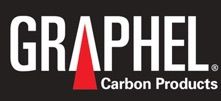Sinker EDM – Dielectric Fluids
 Choosing Dielectric Fluid for Sinker EDM Applications
Choosing Dielectric Fluid for Sinker EDM Applications
April 2018
Choosing the correct dielectric fluid for your EDM application is not always as straightforward as it might seem. Many criteria need to be taken into account. Some are obvious, such as degree of metal removal and electrode wear, while others are much more subtle.
Dielectric fluid is a material whose main purpose is to prevent or rapidly quench electric discharges. Dielectric liquids are used as electrical insulators in high voltage applications to provide electrical insulation, suppress corona and arcing, and to serve as a coolant.
A good liquid dielectric should have high dielectric strength, high thermal stability and chemical inertness against the construction materials used, non-flammability and low toxicity, good heat transfer properties, and low cost. Liquid dielectrics are self-healing; when an electric breakdown occurs, the discharge channel does not leave a permanent conductive trace in the fluid.
Sinker EDM machines typically use hydrocarbon oil for their dielectric fluid, into which both the workpiece and spark are immersed. In contrast, wire EDM machines normally use deionized water, into which only the sparking area is immersed. Whether oil-based or water-based, the dielectric fluid used in EDM machines serves three critical functions:
• Controlling the spacing of the sparking gap between the electrode and workpiece
• Cooling the heated material to form the EDM chips
• Removing EDM chips from the sparking area
Although they’re considerably smaller than those produced in milling or turning processes, EDM does produce chips. These tiny, hollow spheroids are composed of material from both the electrode as well as the workpiece. Just like any chip, they need to be removed from the cutting zone, which is accomplished by flowing the dielectric fluid through the sparking gap.
As the dielectric fluid breaks down—whether as the result of age or contamination—the risk of unstable discharge increases. Control electronics can compensate to a certain extent, but the only real solution is to continually pump clean dielectric fluid through the cutting zone to flush it. The more conductive particles in the fluid, the more difficult it is for the machine to maintain stable electrical thresholds inside the sparking gap.
Because the lifespan of dielectric fluid depends on a host of factors, such as its type and the efficiency and quality of your EDM fluid filters, it has no definitive expiry date. As a rule of thumb, however, if you’re using an oil-based fluid and it’s over five years old, it should probably be replaced. You can also perform sight and smell comparisons between used and new fluids, but the best way to determine whether your dielectric fluid needs to be replaced is with a refractometer.
Choosing the right dielectric fluid for your EDM application is not always as straightforward as it might seem. Many criteria need to be taken into account. Some are obvious, such as degree of metal removal and electrode wear, while others are much more subtle.

Pasang Iklan Kost Bulanan
Meninggalkan komentar untuk menjadikannya viral, terima kasih dari IDProperti.com | Pasang Iklan Properti Gratis
Pasang Iklan Jual Rumah Bekasi
Harus meninggalkan komentar untuk artikel yang inspiratif seperti ini, terima kasih dari IDProperti.com | Pasang Iklan Properti Gratis
IDProperti
Blog dengan konten terbaik ada di sini, terima kasih dari IDProperti.com | Pasang Iklan Properti Gratis